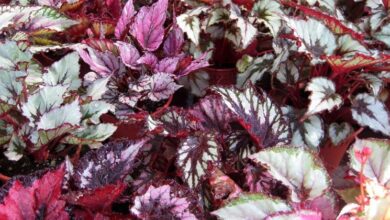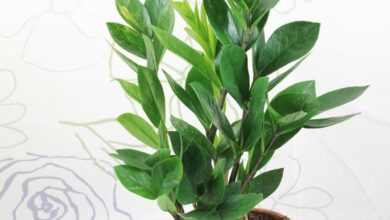Ficus Tree Care: Tips for Growing Ficus Indoors
Ficus are a common plant in the home and office, mainly because they look like a typical tree with a single trunk and an extending canopy. But despite their popularity, ficus plants are very difficult. However, if you know how to care for a ficus plant, you will be better equipped to keep it healthy and happy in your home for years to come.
Learn more about ficus houseplants
What is commonly known as a ficus is technically a weeping fig. It is a member of the plant genus Ficus , which also includes rubber trees and fig trees, but as far as houseplants are concerned, most people simply call ficus a weeping fig Ficus benjamina .
Ficus trees can retain their tree shape regardless of their size, making them ideal for bonsai or massive houseplants in large areas. Their leaves can be dark green or variegated. In recent years, some imaginative nurseries have begun to take advantage of their flexible trunks to braid or twist plants into different shapes.
Indoor ficus culture
Most ficus enjoy indirect or filtered light, with a variety of varieties that can readily take on medium light. Both bright and direct light can cause scalding and leaf loss.
Ficus trees also do not tolerate low temperatures or draughts. They must be stored at temperatures above 60 F. (16 C.) and actually prefer temperatures above 70 F. (21 C.) Cold drafts from windows or doors will damage them, so be sure to place them where drafts are not a problem.
How to take care of a ficus
When growing ficus plants indoors, it is important to maintain relatively high humidity around the plant. Regular fogging or placing the ficus in a pebble tray filled with water is a great way to increase its humidity, but keep in mind that while they like high humidity, they do not like roots that are too wet. Therefore, when watering, always check the soil surface first. If the top layer of soil is wet, do not water it, as this means that they have enough moisture. If the soil surface is dry to the touch, this indicates that they need water.
Also, when caring for a fictitious plant, keep in mind that it grows quickly and needs many nutrients to grow well. Fertilize once a month in the spring and summer and once every two months in the fall and winter.
Common problems in the care of a fictitious plant
Almost everyone who has ever had a ficus has asked themselves, «Why does my ficus drop its leaves? A leafy ficus is the most common problem with these plants. Leaf drop is the standard reaction of a ficus to stress, whether it is for one of the following reasons
- Insufficient or excessive watering
- Low humidity
- Very low brightness
- Transfer or monitoring
- Drafts
- Temperature change (too hot or too cold)
- Pests
If your ficus is losing its leaves, go through the checklist for caring for the ficus tree and correct anything that is wrong.
Ficus are also subject to parasites such as scale insects, scales and spider mites. A healthy ficus will not experience these problems, but a stressed ficus (which is at risk of losing its leaves) will likely develop a parasite problem quickly. A leakage of «sap» from a ficus houseplant, which is actually molasses from an invasive pest, is a sure sign of infestation. Treating the plant with neem oil is a good way to manage these pest problems.


